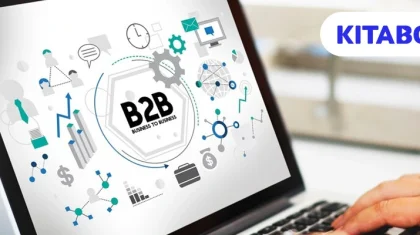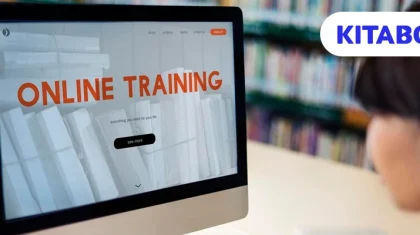
9 Biggest Myths About Digital Publishing Finally Debunked!
The publishing industry has undergone a paradigm shift since the emergence of eBooks. Digital publishing has witnessed tremendous growth in terms of benefits such as low cost of production and the ability to reach out to a wider audience on a global scale. People want to consume content while on the go. Digital content not only serves their need for easy accessibility and availability, but also proves to be convenient in delivering a holistic reading experience with various interactive multimedia elements.
Publishers that have already chosen to go the digital publishing route, are reaping the benefits of an extended reach, ability to add interactivity, universal compatibility, better distribution, quicker conversion, and cost-efficiency.
However, a lot of misconception surrounds the digital publishing industry and the digital conversion process. As a digital publisher and a digital content consumer, it is imperative to grow beyond these myths and be well-informed about the facts. This article aims to debunk some of the myths about digital publishing, and why publishers should make e-publishing a part of their digital transformation strategy.
Here are the top myths about digital publishing:
Myth #1 eBooks are easy to duplicate
Digital Publications Are Easier to Replicate And Reproduce Which Leads to Revenue Loss.
Fact– Most Digital publishing platforms offer DRM (Digital Rights Management) that protects copyrighted content by encrypting it in a locked state, preventing piracy. A DRM protected content can be securely distributed amongst your consumers without worrying about any intellectual property theft threats.
It is impossible to duplicate the DRM protected content because post encryption, it can be only accessed with unique access codes. This makes digital publishing a secure process.
Know how to create a DRM protected eBook and distribute it securely.
Myth #2 eBooks Are Only Suitable for Linear or Text-heavy Content
Digital publications are only suitable for linear text or for content with majority text such as novels, journals.
Fact – The major advantage one derives out of digital publishing is the extended reach due to its compatibility with devices like mobiles, eBook readers, tablets, etc. All these devices are capable of displaying high-resolution multimedia content, enabling the digital publishing industry to create and publish graphics-heavy digital publications as well.
With the inclusion of interactive multimedia elements, you can bring your content to life. This increases the reader’s engagement with the content and helps in delivering an all-round reading experience.
Learn more about how you can boost readers’ engagement by creating an interactive eBook.
Myth #3 eBooks Don’t Allow Offline Access
Like printed books, eBook readers or mobile devices cannot be used to read offline without internet connectivity.
Fact – Digital publishing platforms can convert eBooks to mobile compatible formats, which enable the reader to download and access the content offline at their convenience.
Secured offline access is one of the best features of digital publishing. It lets the reader enjoy the eBook even in the absence of internet connectivity. This will help you extend your reach to the areas with no active internet access.
Myth #4 Digital Publications Lack Aesthetic Appeal
The content may not look identical to its printed version and digital publishing will deplete its visual appeal.
Fact– The digital publishing process requires changing the layout of the content keeping in mind its purpose and target audience. To make the digital publication compatible with most devices, change in layout will, in fact, make it more aesthetically appealing. Depending on your publishing goals, you can choose the layout best suited for your content.
Myth #5 Only eBook Readers Can Access Digital Publications
Due to the cost involved in buying a dedicated eBook reader, publishers may lose their potential audience.
Fact– Digital publishing platforms offer the functionality to convert eBooks to mobile compatible formats that readers can view on their device of choice, eliminating the need for an eBook reader. There are cross-platform eBook readers designed to operate across devices with the same efficiency. Here is a list of 9 best cross-platform eBook readers.
Myth #6 High Conversion Cost
Converting publications in digital and mobile compatible formats is expensive.
Fact– Digital publishing platforms offer affordability with different pricing plans, few of which are mentioned below:
(1) Revenue sharing plans- Free conversion in exchange for a percentage of revenue
(2) Flexible pricing- Pay as you go, which can be changed later
(3) Fixed Annual/Monthly fees- Flat fees at regular intervals
Myth #7 Digital Publications Aren’t Engaging
Physical books are more engaging for the readers than the digital content.
Fact – Both formats have their own merits, depending on the likes and dislikes of the readers.
When it comes to digital publishing, you can add a layer of interactivity to your publications by embedding multimedia content.
Digital publishing platforms also offer an option to integrate interactive elements such as Augmented Reality to stimulate the imagination of a reader with 3D visuals, making the learning contextual and engaging. With all these technological innovations, digital publishing enhances the reading experience and ensures high engagement and interactivity.
Myth #8 Digital Publishing Process Distorts the Content
The publishing process may drastically change the formatting or layout, disorientating the content.
Fact – Digital publications generally come with 2 types of content layouts –
(1) Static layout (Fixed) or
(2) Dynamic layout (Reflowable).
To enable easy access to their content, publishers can format content in either of the layouts, for making it available across all devices. Read more about the difference between the fixed and reflowable layout.
Myth #9 Digital Publishing Requires Experienced Professionals
The publishing process may drastically change the formatting or layout, disorientating the content.
Fact – Digital publications generally come with 2 types of content layouts which are
(1) Static layout (fixed) or
(2) Dynamic layout (Reflowable).
To enable easy access of their content, publishers can format content in either of the layouts, for consumption across all devices.
Conclusion:
With the increasing number of mobile devices and the fast-paced lifestyle that the world has adapted to, people are moving towards digital content consumption. The technological interventions are only enhancing the reader’s experience.
Digital publishing caters to a wider audience in a cost-effective way. Digital content is easy to access, distribute, and update. With various interactive elements being embedded into an eBook, people enjoy the innovation in the entire reading experience. With the availability of digital publishing platforms that offer multiple features to enrich eBooks, a great opportunity lies ahead for digital publishers to increase and retain their audience.
Discover how a mobile-first training platform can help your organization.
Kitaboo is a cloud-based platform to create, deliver & track mobile-first interactive training content.


